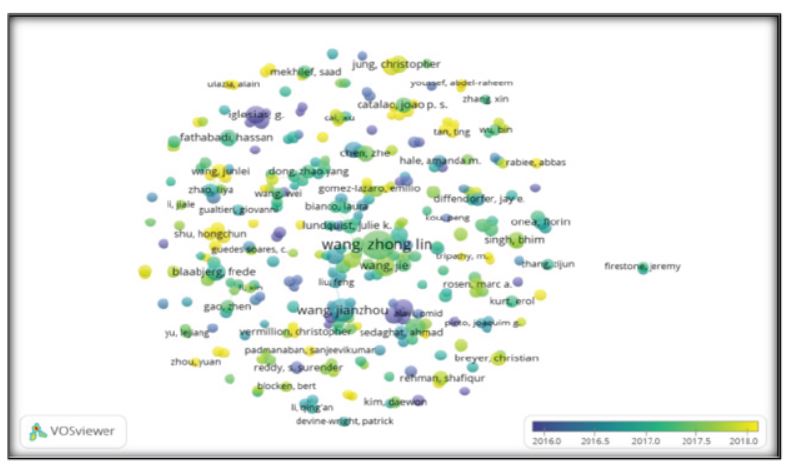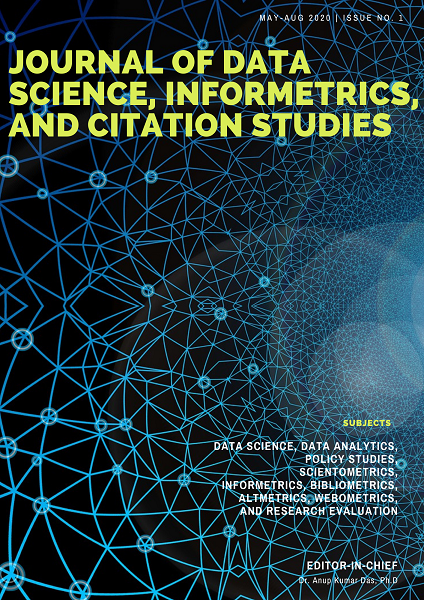Mapping the World Research Output on Wind Energy: A Scientometric Analysis
DOI:
https://doi.org/10.5530/jcitation.3.1.2Keywords:
Scientometrics, Wind energy, Authorship pattern, Web of Science, VOSviewer, Degree of collaborationAbstract
This scientometric study intends to analyze the number of contributions made by researchers in Wind energy worldwide from 2015 to 2019. The main objectives of the study are to explore the scientometric parameters: Authorship pattern, Degree of collaboration, Relative growth rate, Doubling time, Exponential growth rate, Year-wise contribution, Authors contribution, Keyword-wise contribution, Document-wise contribution, Country-wise contribution, Institute-wise contribution, Language-wise contribution. The required data has been retrieved from the Web of Science database. The retrieved data was analyzed through Histcite, VOSviewer, Microsoft Word and Microsoft Excel software. Between 2015 and 2019, 6129 records were published, 1463(25.14%) were published in 2019, and 1045(15.78%) were published in 2005. The author Wang ZL has identified the most prolific author who has published 46 articles, and the most productive country USA published 1185(19.3%) records. The relative growth rate value has been calculated with an increasing trend from 0.65 to 1.44, and the doubling time has been calculated with a decreasing trend from 1.07 to 0.49. The Degree of collaboration is computed as 0.93. The results of this study conclude that wind energy publications have gradually increased in the selected years.

Downloads
Published
How to Cite
Issue
Section
License
Copyright (c) 2024 M. Dinakaran, P. Gomathi

This work is licensed under a Creative Commons Attribution-NonCommercial-NoDerivatives 4.0 International License.



